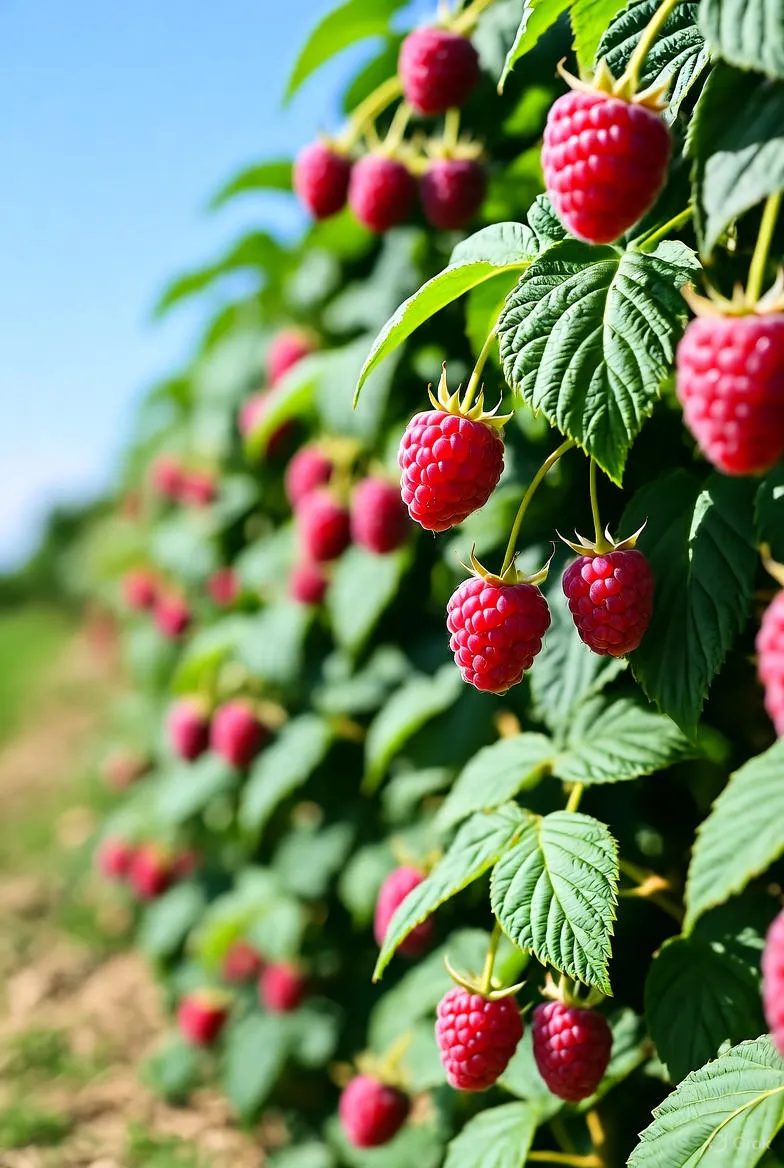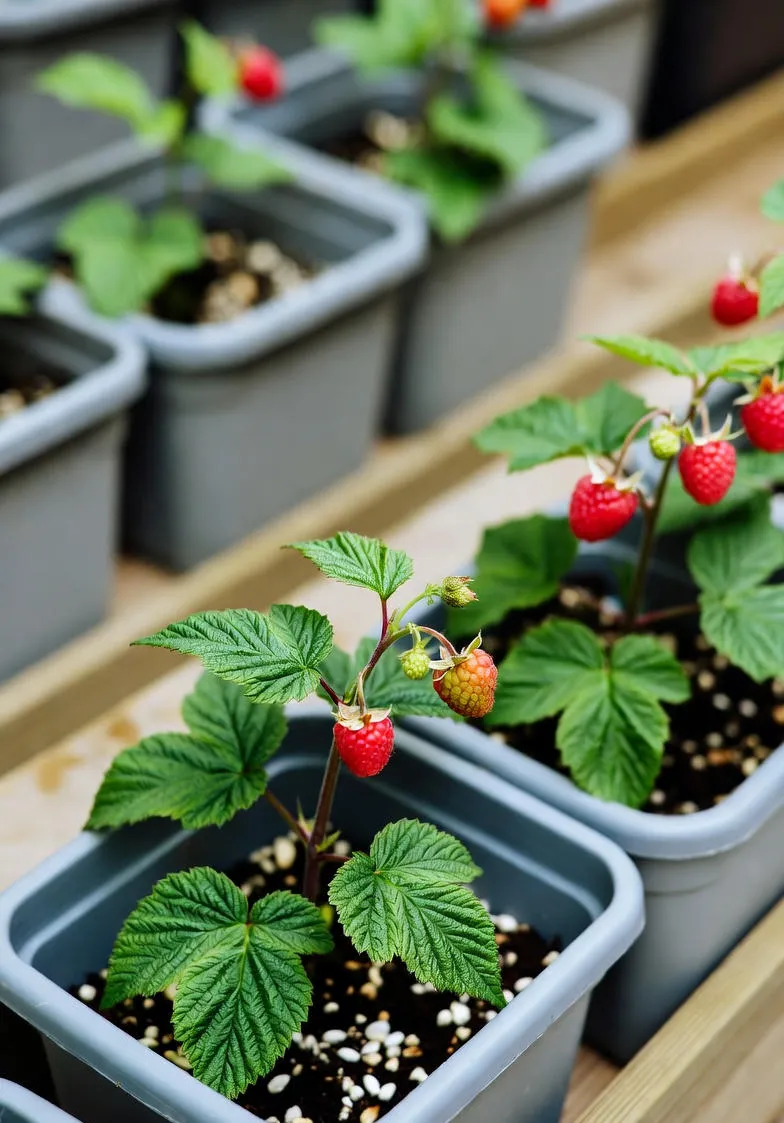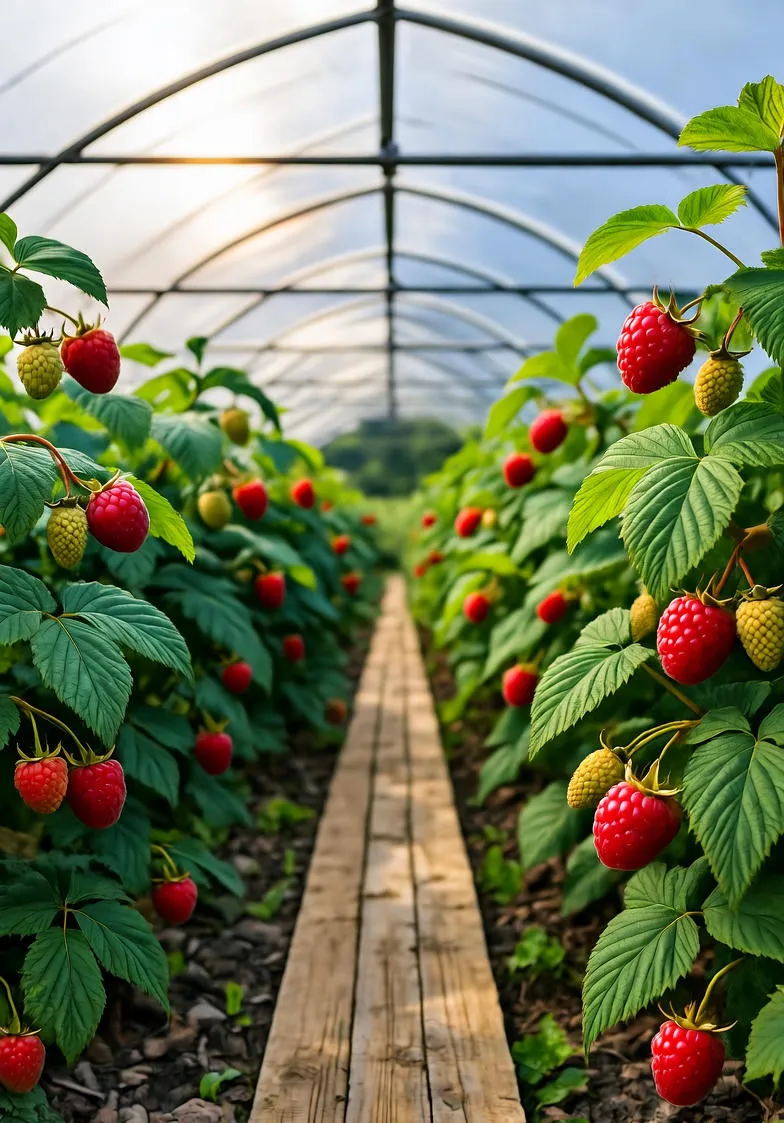How to Start a Raspberry Farm: A Comprehensive Beginner's Guide
Discover step-by-step guidance on starting a raspberry farm, from site selection and variety choices to harvesting and marketing tips for beginners aiming for a successful berry business.

Introduction to Raspberry Farming
Raspberries are one of the most beloved fruits worldwide, known for their vibrant color, sweet-tart flavor, and versatility in culinary applications. Starting a raspberry farm can be a rewarding venture, offering not only financial potential but also the satisfaction of connecting with nature and producing fresh, high-quality produce. Whether you're a hobbyist looking to expand into commercial farming or an aspiring entrepreneur entering the agricultural sector, understanding the fundamentals is key to success.
This guide will walk you through every step of establishing your raspberry farm, from initial planning to ongoing management. We'll cover essential aspects like site selection, soil preparation, variety choices, planting techniques, pest control, and harvesting strategies. By the end, you'll have a solid roadmap to turn your raspberry dreams into a thriving reality.
Step 1: Planning Your Raspberry Farm
The foundation of any successful farm begins with meticulous planning. Start by assessing your resources: land availability, budget, labor, and market demand. Raspberries thrive in temperate climates with well-drained soil and ample sunlight, so evaluate your location's suitability.
Conduct a feasibility study to project costs and revenues. Initial investments might include land preparation tools, plants, irrigation systems, and fencing to protect against wildlife. Estimate yields—mature raspberry plants can produce 1-2 quarts per plant annually—and factor in local selling prices, which often range from $4 to $8 per pint at farmers' markets.
- Define your goals: Are you aiming for small-scale organic production or large-scale commercial output?
- Research regulations: Check local zoning laws, water rights, and organic certification requirements if applicable.
- Budget breakdown: Allocate funds for seeds/plants (20%), equipment (30%), labor (20%), and contingencies (30%).
Engage with agricultural extension services or join farmer cooperatives for insights from experienced growers. Networking can also help secure grants or low-interest loans tailored to new farmers.
Step 2: Choosing the Right Location and Site Preparation
Location is paramount for raspberry success. Ideal sites receive at least 6-8 hours of direct sunlight daily and have good air circulation to prevent fungal diseases. Avoid low-lying areas prone to frost pockets, as raspberries bloom early and are sensitive to late spring frosts.
Soil testing is non-negotiable. Raspberries prefer slightly acidic soil with a pH of 5.5-6.5. Send samples to a local lab to analyze nutrients like nitrogen, phosphorus, and potassium. Amend the soil accordingly: incorporate compost or well-rotted manure to boost organic matter, aiming for 4-6% in the top 12 inches.
Prepare the land by clearing weeds and debris. Till to a depth of 8-10 inches, then level the ground. For commercial setups, consider raised beds or contour planting on slopes to enhance drainage and reduce erosion. Install drip irrigation early to ensure consistent moisture, as raspberries require 1-2 inches of water per week during the growing season.
Climate Considerations
Raspberries are hardy in USDA zones 4-8, but microclimates vary. In warmer regions, provide shade cloth during heatwaves; in cooler areas, use row covers for frost protection. Windbreaks like hedges can shield plants from strong gusts, preserving pollination and fruit quality.
Step 3: Selecting Raspberry Varieties
Not all raspberries are created equal. Choose varieties based on your market, climate, and growth habit: summer-bearing (one large crop) or everbearing (two crops per season).
Popular summer-bearing options include 'Boyne' for cold climates and 'Tulameen' for larger, sweeter berries. Everbearing varieties like 'Heritage' or 'Autumn Bliss' offer extended harvest periods, ideal for fresh market sales.
| Variety | Growth Habit | Berry Size | Best For |
|---|---|---|---|
| Boyne | Summer-bearing | Medium | Cold regions |
| Tulameen | Summer-bearing | Large | Fresh eating |
| Heritage | Everbearing | Medium | Extended harvest |
| Autumn Bliss | Everbearing | Large | Markets |
Source disease-resistant cultivars to minimize future issues. Purchase certified virus-free plants from reputable nurseries to ensure vigor and productivity from year one.
Step 4: Planting Your Raspberries
Plant in early spring or fall, when soil temperatures are cool but workable. Space plants 2-3 feet apart in rows 6-8 feet wide to allow for trellising and machinery access.
Dig holes twice as wide as the root ball and deep enough to bury the crown just below soil level. Spread roots outward and firm the soil gently to eliminate air pockets. Water thoroughly after planting and apply a 2-3 inch mulch layer of straw or wood chips to retain moisture and suppress weeds.
- Prepare supports: Install T-posts and wires for a two-wire trellis system, tying canes as they grow.
- Fertilize initially: Use a balanced 10-10-10 fertilizer at planting, then switch to nitrogen-rich formulas in spring.
- Monitor establishment: New plants may take 1-2 years to fruit; prune lightly in the first season to encourage root development.
Step 5: Ongoing Maintenance and Care
Raspberry farming demands consistent care. Prune annually: for summer-bearers, remove spent floricanes after harvest; for everbearers, mow all canes to the ground in winter for a single fall crop.
Weed control is crucial—hand-pull or use organic mulches to avoid herbicides that harm beneficial insects. Fertilize based on soil tests, typically 2-4 pounds of actual nitrogen per 100 feet of row per year, split into applications.
Pest and Disease Management
Common threats include Japanese beetles, aphids, and anthracnose. Implement integrated pest management (IPM): encourage ladybugs for aphid control, use row covers for beetles, and apply copper-based fungicides for diseases. Rotate crops every 8-10 years and remove infected canes promptly to maintain plant health.
Irrigation management prevents root rot—aim for deep, infrequent watering. In dry spells, supplemental drip lines ensure even distribution without wetting foliage, reducing disease risk.
Step 6: Harvesting and Post-Harvest Handling
Harvest when berries slip easily from the receptacle, typically every 2-3 days during peak season (June-August for summer varieties). Pick in the morning when cool, handling gently to avoid bruising.
Sort and pack immediately in ventilated containers. For fresh sales, cool to 32°F within hours to extend shelf life up to two weeks. If processing, freeze or juice promptly to preserve quality.
Yield expectations: A well-managed acre can produce 5,000-10,000 pounds annually after establishment, translating to substantial income with direct-to-consumer models.
Step 7: Marketing Your Raspberry Harvest
Turning produce into profit requires savvy marketing. Sell at farmers' markets, roadside stands, or through CSA (Community Supported Agriculture) programs. Partner with local restaurants or grocers for wholesale deals.
Value-added products like jams, pies, or raspberry-infused vinegars can boost margins. Build a brand with storytelling—highlight your sustainable practices or heirloom varieties to attract eco-conscious buyers.
- Digital presence: Use social media to showcase your farm's journey and pre-sell shares.
- Pricing strategy: Price competitively; fresh pints at $5-7, U-pick at $3/lb to encourage volume.
- Sustainability angle: Certifications like organic or pollinator-friendly can command premiums.
Challenges and Solutions in Raspberry Farming
No farm is without hurdles. Weather extremes, labor shortages, and market fluctuations pose risks. Mitigate with crop insurance, diversified income streams (e.g., agritourism), and mechanization like berry harvesters for larger operations.
Soil fatigue from intensive planting can be addressed through cover cropping with clover or rye to restore nutrients naturally. Stay adaptable—monitor trends like demand for organic or low-sugar varieties to pivot as needed.
Financial Projections and Long-Term Sustainability
Break-even typically occurs in year 3-4, with ROI of 20-40% thereafter for efficient operations. Track expenses meticulously using farm management software.
For sustainability, adopt regenerative practices: no-till methods, biodiversity planting, and rainwater harvesting reduce environmental impact while cutting costs. Educate yourself continually through workshops and online resources from organizations like the North American Raspberry & Blackberry Association.
Conclusion: Your Path to a Bountiful Raspberry Farm
Starting a raspberry farm is a labor of love that blends science, patience, and business acumen. With careful planning, dedicated maintenance, and innovative marketing, you can cultivate not just berries, but a legacy in sustainable agriculture. Begin small, learn from each season, and watch your farm flourish. The sweet taste of success awaits—roll up your sleeves and get planting!


